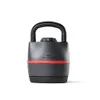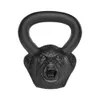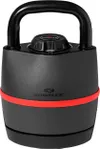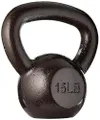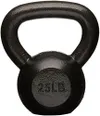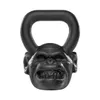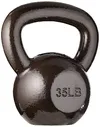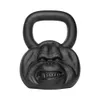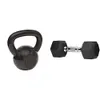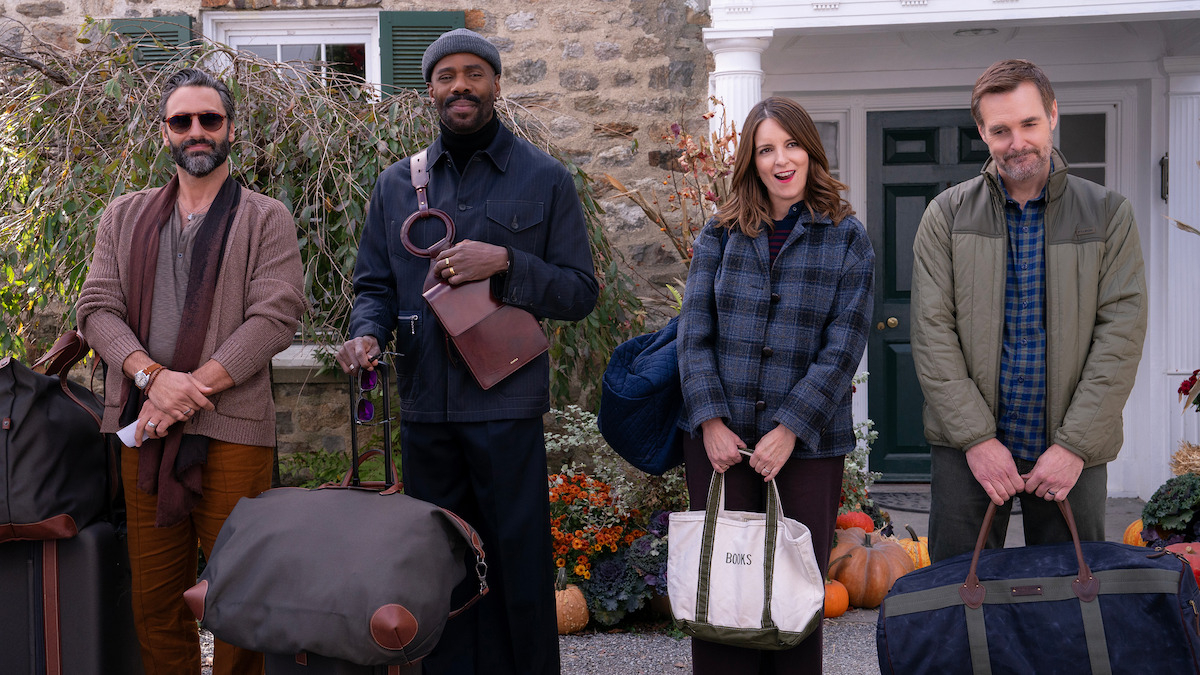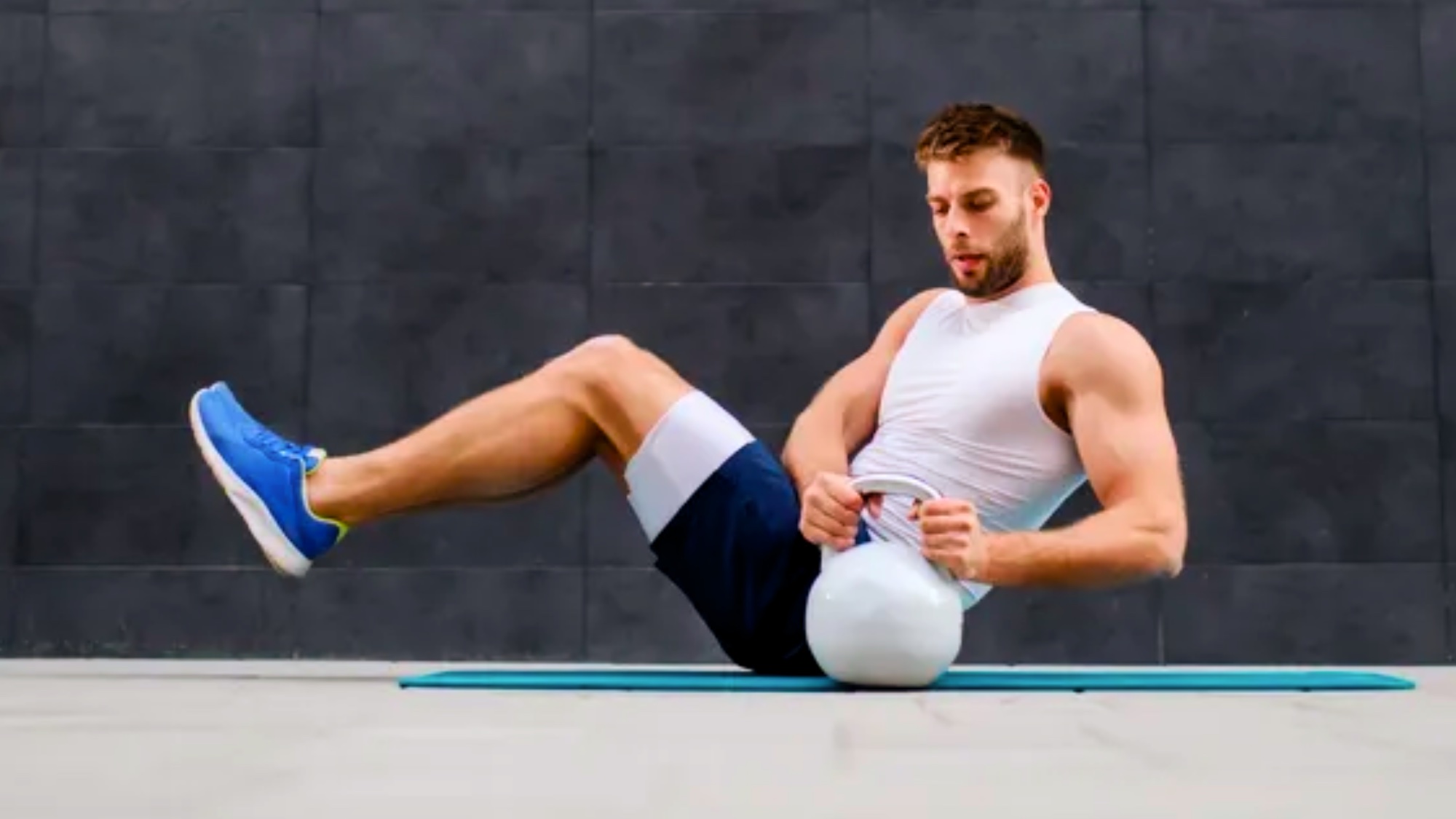
Sit down but don't take a load off. Instead, grab a kettlebell and try this seated kettlebell workout that strengthens your upper body and core muscles in just 10 moves and 20 minutes, all without standing up or putting additional stress on your lower back.
If you haven’t already invested in kettlebell training, we’ve tested some of the best kettlebells for weightlifting and can’t get enough of the models in our round-up, adjustable or not. You might also want to roll out an exercise mat to support your joints for some moves if you don’t have a chair.
Whether you have limited mobility or just fancy taking a seat this time, check out this 20-minute seated kettlebell workout you can try from anywhere and at any fitness level.
Watch the seated kettlebell workout by Samuel Jordan
The workout comes courtesy of Samuel Jordan. “Here’s a seated kettlebell workout to build your upper body,” he introduces. It targets anyone with limited mobility or working through a lower-body injury, but anyone can benefit from the workout. It’s an upper-body beasting, trust me.
It follows a HIIT-style format, which means you’ll increase your heart rate while strengthening your core and various upper body muscles. To set expectations, this isn’t going to tear through hundreds of calories in 20 minutes. People hear “HIIT” and assume it’ll be a high-calorie burner, but the amount of calories you burn during exercise varies from person to person and depends on individual biology and your capacity to burn energy, not just the workout itself. And especially not in just 20 minutes.
Work for 40 seconds and rest for 20 seconds, moving through the exercises below and completing two rounds:
- Curl to press
- Halo
- Overhead triceps extension
- Dead clean to press (right)
- Dead clean to press (left)
- Woodchop (left to right)
- Woodchop (right to left)
- Upright row
- Press to front extension
- Shrugs.
Jordan recommends taking it at your pace and adding extra rest if needed. It’s impressive how creative you can be while sitting down; I found this kettlebell workout super challenging because I couldn’t use my legs to help drive momentum, especially when overloading my upper body to fatigue.
Sign up to get the BEST of Tom's Guide direct to your inbox.
Get instant access to breaking news, the hottest reviews, great deals and helpful tips.
Seated exercises can sometimes reduce demand on core activation and stability, especially if your back is supported, so I love that some of these moves specifically target your core muscles, which are responsible for posture, safe torso movement and helping control and shift heavy weights. Your biceps, triceps, shoulders, chest and back muscles are also at work throughout the short session.
As a guideline, the instructor used a 16kg kettlebell, and I chose a 12kg weight. For some exercises, you’ll need elevation like a chair or bench, but others can be done sitting on the floor.
Trainer notes

Sam is a trainer and senior fitness writer at Tom's Guide.
The kettlebell halos and woodchoppers are out-and-out core exercises that work the abs, obliques, arms and delts; upright rows and shrugs heavily target your anterior, lateral and posterior delts, biceps and traps. Presses hit the triceps, pecs and anterior delts, while curls primarily strengthen the biceps and extensions work the triceps.
The kettlebell clean exercise is considered a technical move to master but is worth learning. You’ll reset the bell on the floor between each rep, pulling the weight up to your shoulder, then adding the press overhead. It’s a popular standalone kettlebell exercise and is used as a transition between floor-to-ceiling moves, so it will come in handy if you learn it properly.
You might want to scale weights up and down depending on the exercise, especially if you want to maximize muscular control, so I recommend an adjustable kettlebell or two sets of weights. If you only have one or two weights handy, work single-sided and settle for a medium-heavy weight.
From sitting, these moves may feel noticeably tougher than if you performed them standing because your body must control the weight using just the upper body and core — the muscles these moves are designed for — and your legs can’t step in to help drive the movement, meaning the targeted muscle groups must do all the work. If this workout isn’t for you, I’ve gathered up some of our favorite kettlebell workouts below instead.
More from Tom's Guide
- 5 best kettlebell exercises for beginners to build full-body strength at home
- Forget burpees — build muscle all over with one kettlebell and these four moves
- You only need one kettlebell and 3 seated ab exercises to strengthen your core and hips

Sam Hopes is a level 3 qualified trainer, level 2 reiki practitioner and senior fitness writer at Tom's Guide. She is also currently undertaking her Yoga For Athletes training course. Sam has written for various fitness brands and websites over the years and has experience across brands at Future such as Live Science, Fit&Well, Coach, and T3.
Having worked with fitness studios like F45 and Virgin Active, Sam now primarily teaches outdoor bootcamps, bodyweight, calisthenics and kettlebells. She also coaches mobility and stretching-focused classes several times a week and believes that true strength comes from a holistic approach to training your body.
Sam has completed two mixed doubles Hyrox competitions in London and the Netherlands and finished her first doubles attempt in 1:11.
